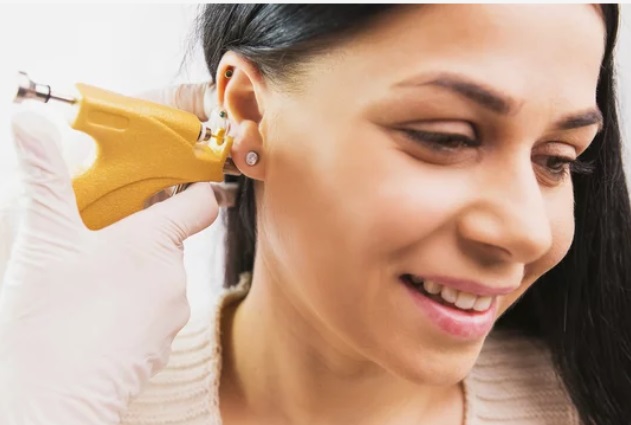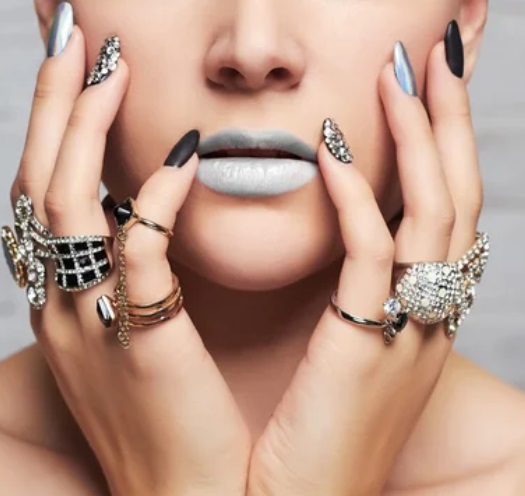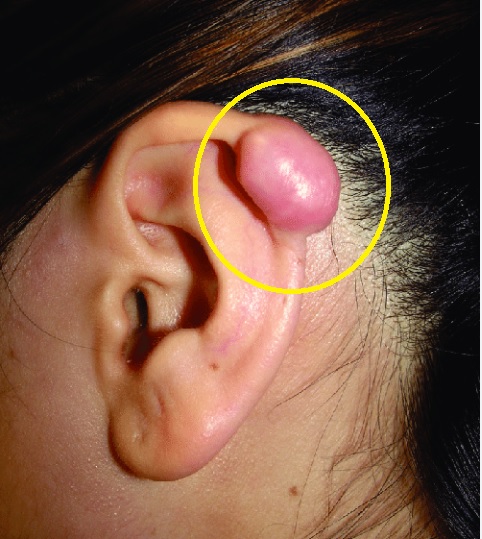Are you considering getting a piercing on your ear or nose?
Piercings are a popular form of self-expression, but it’s essential to understand that there can be complications, such as keloids.
In this article, we’ll delve into what causes keloids on ear and nose piercings and explore how to prevent and treat them.
Understanding Keloids
What Are Keloids?
Keloids are raised overgrowths of scar tissue that can develop at the site of a wound, including ear and nose piercings.
They can be itchy, painful, and aesthetically undesirable. Unlike normal scars, keloids extend beyond the original wound and can continue to grow over time.
They result from an overproduction of collagen during the healing process.
While the exact cause of keloid formation is not fully understood, it’s believed to involve a combination of genetic, environmental, and hormonal factors.
Some individuals are more prone to keloid formation due to their genetic makeup.
Is a Keloid Cancerous?
ABSOLUTELY NOT.
They may also be painful, itchy, and are likely to continue to grow without treatment.
Is a Keloid Contagious?
No, they are NOT.
Factors Contributing to Keloids
Several factors can increase the risk of developing keloids after ear and nose piercings:
1. Genetics
Genetics plays a significant role in keloid formation.
If you have a family history of keloids, you’re more likely to develop them after a piercing.
This genetic predisposition can be challenging to overcome.
2. Piercing Technique
The technique used during the piercing procedure can affect keloid formation.
Piercing with a gun or using improper sterilization methods may lead to complications, including keloids.

3. Tension on the Piercing
Tension on the piercing site can also contribute to keloid formation.
Constant irritation from clothing, friction, or playing with the jewelry can increase the likelihood of keloid development.
4. Piercing Jewelry
The type of jewelry used can make a difference.
Low-quality or inappropriate materials may lead to allergic reactions or infections, increasing the risk of keloids.

5. SKIN TYPE
Individuals with darker skin tones are generally more prone to keloid formation.

Preventing Keloids
Now that we’ve explored the factors that can lead to keloids, let’s discuss prevention strategies:
Choose a Reputable Piercer
Select a professional and reputable piercer who follows proper sterilization procedures. Research their credentials, read reviews, and ask for recommendations.
Nowadays, many people are opting to get their ear or nose piercings done by ENT specialists.
Opt for High-Quality Jewelry
Invest in high-quality jewelry made from materials such as surgical stainless steel, titanium, or niobium. These materials are less likely to cause irritation or allergic reactions.
Proper Aftercare
Follow your piercer’s aftercare instructions diligently. This includes cleaning the piercing site with a saline solution and avoiding unnecessary touching or twisting of the jewelry.
Treating Keloids
If you’ve already developed a keloid, there are treatment options available —
1) Steroid Injections:
Corticosteroid injections can help shrink keloids by reducing inflammation and inhibiting collagen production.
2) Pressure Therapy:
Applying pressure to the keloid through the use of silicone sheets or other pressure devices may help flatten the scar.
3) Cryotherapy:
Freezing the keloid with liquid nitrogen can be used to reduce its size.
4) Laser Therapy:
Certain types of lasers can be used to minimize the appearance of keloids.
5) Surgical Removal:
Surgical excision may be an option, but there is a risk of keloid recurrence after surgery.
6) Radiation Therapy:
In some cases, radiation therapy may be used to prevent keloid recurrence after surgical removal.
It’s important to note that not all treatments are suitable for everyone, and the effectiveness of each method can vary from person to person.
Additionally, keloids have a STRONG tendency to RECUR, so ongoing care and monitoring are often necessary.
If you suspect you have a keloid or experience complications with a piercing, it’s recommended to consult with a healthcare professional or a dermatologist for personalized advice and treatment options.
Early intervention is key to managing keloids effectively
Conclusion
In conclusion, keloids on ear and nose piercings can be a frustrating issue to deal with, but with the right knowledge and precautions, you can minimize the risk.
Genetics, piercing technique, tension, and jewelry choice all play a role in keloid formation.
To prevent keloids, choose a reputable piercer, opt for high-quality jewelry, and follow proper aftercare.
Remember, a CORRECT knowledge can go a long way in ensuring your piercing experience is as smooth as possible.
So, go ahead, adorn your ear or nose, and enjoy your new accessory with confidence!
